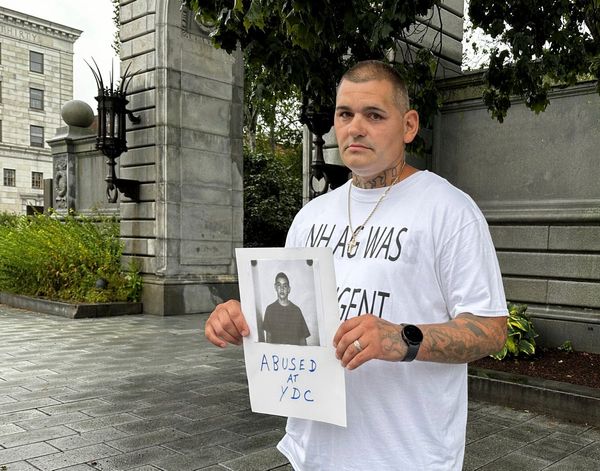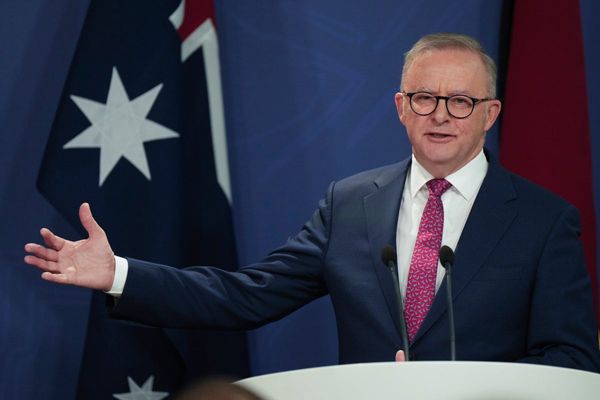
Lost in the commentary about this month’s U.S. presidential election is just how difficult it is to unseat authoritarian-leaning populists through the ballot box.
In fact, around the world, relatively few opposition parties manage to unseat such movements that way, at least in their first attempt. That’s because the populists’ willingness to break norms, drum up anger, and erode checks and balances typically is appealing and works to further institutionalize their power. In Latin America, where autocratic populism has a long history, only two populist presidents have lost elections since the 1980s: Daniel Ortega in Nicaragua in 1990 and Hipólito Mejía in the Dominican Republic in 2004. The rest have won popular votes, only abandoning power under military pressure, as in the case of Bolivia’s Evo Morales in 2019; societal pressure, as happened to Peru’s Alberto Fujimori in 2000; or because of constitutional limits to their reelection, as for Colombia’s Álvaro Uribe in 2010.
In other words, even though the Democrats’ margin of victory may not have been as large as they wanted, their unseating of U.S. President Donald Trump was impressive—and not just for U.S. standards, where only three elected incumbent presidents since the 1930s have failed to secure reelection, but also around the world. If anything, their success should serve as a message for other countries: It is possible to contain authoritarian-leaning populism, and that the way to do it is by relying on party work, voter mobilization, and a moderate amount of daringness.
It is easy to downplay the results of the 2020 U.S. election by pointing out that the Democrats lost ground in the House of Representatives and did not gain as much as they wanted in the Senate, or by arguing that, in the United States, Trump’s brand of populism never stood a strong chance because its liberal democratic institutions are strong. But those two arguments cut against each other.
It is important, meanwhile, not to overstate the United States’ institutional protections against authoritarian-leaning populism. It is true that, during the past four years, the country was able to maintain a strong judiciary, civil society, and press, all of which did their part in checking presidential abuses. But it is also true that this style of populism works precisely by eroding those institutions, and under Trump, they eroded significantly. For a good chunk of the population, meanwhile, Trump’s populist message still won the day—and it appears set to stick around, especially as the outgoing president falsely claims that the election was stolen from him and the Republican Party hesitates to disavow him.
Institutions, in other words, were never going to defeat Trump or Trumpism on their own. They needed help during election time, and here is where other parties attempting to unseat authoritarian-leaning populists can draw some lessons.
The first lesson is the importance of party unity. The biggest risk under autocratic populism is not that the opposition will dwindle but that it will fragment. (In Venezuela, at one point in the 2000s, there were dozens of parties challenging the populist authoritarian Hugo Chávez.) In fact, these populists generally cause a surge—not a decline—in dissidence as more of the population becomes angry, maybe even desperate.
The problem is when the dissidents organize themselves into multiple factions—a risk that is particularly high with populist authoritarians. That’s because populists, by claiming to want to break down the entire existing system, produce dissent from all ideological angles—from the left, right, and center. To the extent that populism reshuffles the national political discourse, meanwhile, it also produces a multitude of views on how best to fight it: obstruction, containment, greater populism on the other side of the spectrum, and so on. It isn’t easy to bring all the different ideologies and strategies into one big tent.
Yet the Democratic Party defeated Trump by doing just that. It managed to hold onto its progressive wing while simultaneously welcoming moderate conservative leaders like John McCain-style Republicans, foreign-policy experts who worked for previous Republican administrations, and fiscal conservatives.
To be sure, the United States’ electoral rules helped in this task. The Electoral College’s winner-take-all rules discourage the formation of new parties that have little chance of winning a majority. But unity was also the result of strategic decisions (remember the third-party candidates from the 2016 presidential election).
The most important of those decisions was to run a campaign of moderate daringness: avoiding extremes but trying to break the mold from the middle. For example, the party chose a moderate, Joe Biden, as its candidate for president. Biden chose Kamala Harris, an Asian and Afro-Caribbean American woman and career politician, as his running mate. The choice broke ground on race and gender, but it also signaled to voters that protecting existing institutions would be privileged over forming them anew.
Another way the party exercised moderate daringness was in its approach to social protest. The Trump administration, like many similar movements, generated social unrest: first in the form of the #MeToo movement against the abuse of women and the alpha-male culture that Trump came to represent. During Trump’s last year in office, Black Lives Matter regained momentum against racialized police brutality and the culture of white nativism that the president never quite disavowed.
Social protest presents opposition parties with a dilemma. It can sometimes help their cause, but it can also backfire. Protest raises awareness of important issues that were less visible to voters and energizes and motivates people to act. But protest can also give fodder to authoritarian-leaning populists, who run on campaigns of law and order—generally code for preserving the power of existing elites. (In many ways, Trump ran his campaign on thwarting the rise of minorities.)
The Democratic Party managed to play its cards well. It did not discourage social protest but focused on channeling anger into voter mobilization rather than into more protest, adopting populist rhetoric of its own, or assuming that anger would bring out the vote automatically. For all his assaults on liberal democracy, Trump left the electoral route to his demise open, even if littered with hurdles. And rather than reject such a route, the Democrats exploited it as fully as possible. Democratic operatives and politicians such as Stacey Abrams in Georgia and Beto O’Rourke in Texas defined the strategy: Focus on new voters (young citizens), low-propensity voters (those feeling apathetic or defeated), and even sincere-regret moderates (typically suburban voters who no longer supported Trump but were unsure about switching sides). The opposition also encouraged voting early and voting by mail in response to the challenges posed by the coronavirus pandemic.
The strategy paid off. According to exit polls, more new voters and moderate voters went for the Democratic Party. The party improved its electoral performance in the suburbs by about 4.6 percentage points, suggesting some success with sincere-regret voters as well.
While it is important to recognize the significance of unseating Trump, it is also important to remember that the Democrats’ victory was not a complete one. Trumpism still hangs on. And this, too, was predictable. Once authoritarian populism becomes mainstream, as it has in the United States, it doesn’t quickly retreat—it lingers as a powerful opposition force waiting for its next opportunity, all the while propagating the viewpoint that the other side is dangerous.
Democrats should therefore not assume that good governance and clean government—or even addressing people’s real economic needs—will be enough to counter the ideological appeal of Trump’s populism. The best they can hope for is to stay electorally competitive. This means ensuring their party remains a big tent with room for different ideologies, even if that means moderating some of the most impassioned demands coming from within their coalition. And, of course, the party should realize that voting and unity don’t happen on their own. They need to be helped along.







